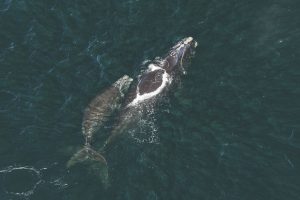A black-coated Canada lynx has, for the first time ever, been photographed.
Captured in a 30 second cell phone video by University of Alberta researcher Thomas Jung in a rural residential area near the town of Whitehorse, Yukon, the lynx can be seen trotting calmly between white spruce trees and parked vehicles. While the footage was originally taken in August 2020, the unique finding has now been officially reported in the journal Mammalia.
Canada lynx generally have slivery grayish coats in winter, changing to reddish brown in summer but accompanied by dark spots and hairs on the tips of their tails and ears. Unlike members of the cat family (felidae), it’s unusual for coat colour to vary in species belonging to the Lynx genus. So much so that, along with being the first recorded case of melanism in Canada lynx, it is also among very few occasions of coat colour variations found in any member of the genus Lynx.








